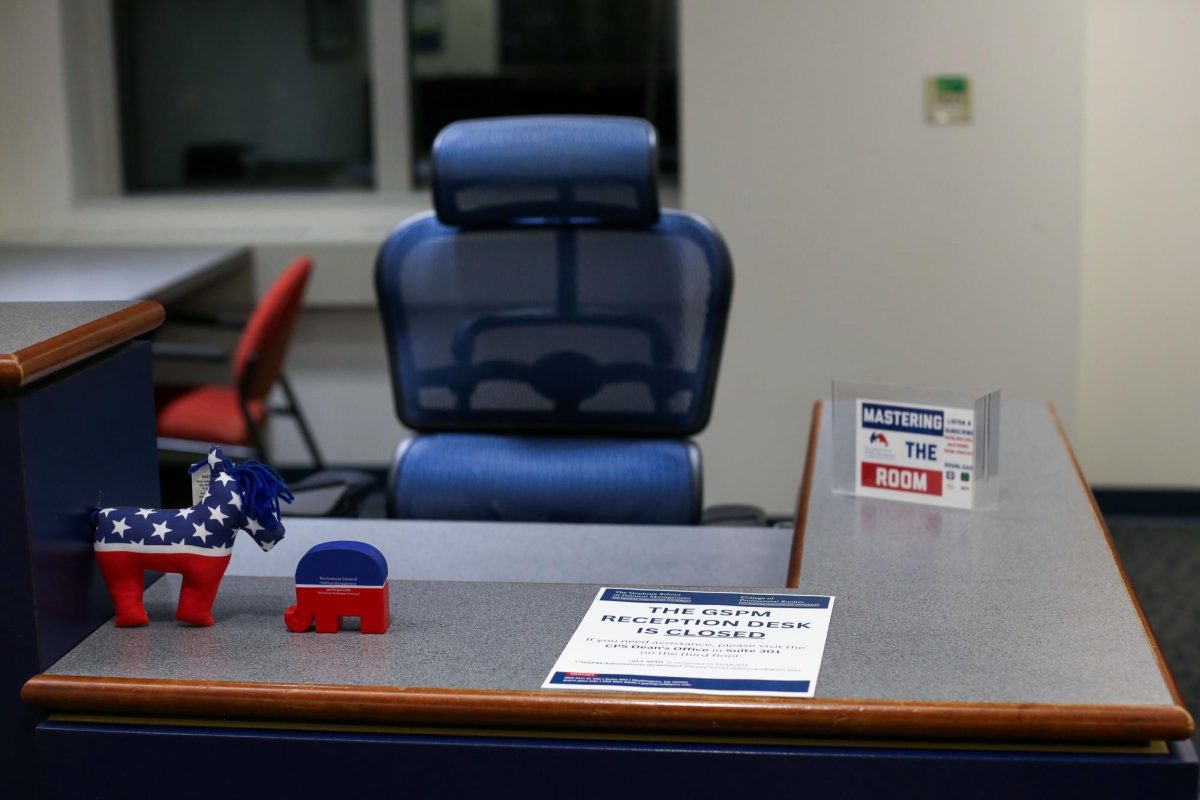The decision to axe a longstanding fixed tuition policy will bring GW’s cost of attendance in line with peer institutions, higher education experts said.
Administrators announced last week that, beginning with the Class of 2024, incoming undergraduates will no longer pay a fixed tuition rate for up to 10 consecutive semesters, changing a policy in effect since 2004. Experts said the move will allow officials to adjust tuition rates year-to-year to meet annual revenue needs.
University spokeswoman Maralee Csellar said the decision was part of an “overall look at the undergraduate student experience and how it can be improved,” one of University President Thomas LeBlanc’s five top initiatives since his arrival.
The change will net the University an estimated $12 million per year, but there will be no immediate impact for “several years,” she said.
Csellar added that LeBlanc worked with “senior leadership” this summer to develop the plan, which was ultimately approved by the Board of Trustees this summer.
She said officials will continue to review need-based financial aid packages annually and adjust aid based on the cost of attendance. The board has approved multiple tuition increases for incoming students in each of the past several years.
Csellar added that merit aid scholarships – which in the past have not increased for students to meet jumps in the cost of attendance – will not be adjusted under the floating tuition rate policy.
“The University will take into account the tuition level when building its annual aid budget,” Csellar said. “How this translates to an individual student will depend upon the overall need of our families, the level of need for a particular student and annual budgeting decisions of the University.”
Csellar declined to say whether officials expect to see a change in the number of undergraduate applications or the admitted student yield rate as a result of the change.
“We believe that the value of a GW education is clear and that the absence of the fixed tuition program will not hinder our capability to enroll a diverse and talented group of students,” she said.
Higher education experts said that while changing the fixed tuition policy eliminates a marketing tool to attract prospective students, the move – which will align GW with all 12 of its peer institutions – will likely not significantly affect admissions or yield rates.
Richard Vedder, a distinguished professor emeritus of economics at Ohio University, said officials likely initially implemented the fixed tuition policy to provide financial certainty to students and parents, abate some of the worry associated with GW’s high sticker price and entice more students to apply.
He added that the fixed tuition policy likely allowed the University to compete with schools with larger endowments and financial aid budgets. GW’s endowment hit nearly $1.8 billion by the end of fiscal year 2018, slightly below the average size of GW’s peer schools’ endowments.
Vedder said officials probably realized the initial rationale for instituting a fixed tuition policy no longer helps them compete with other schools.
“My guess is that it is no longer viewed as cool,” Vedder said. “That is to say, the peer schools that GW competes with have mostly either not adopted this or they have abandoned it, and GW’s feeling that it is not giving them any more advantage.”
Vedder added that the University likely no longer needs the policy to attract applicants and students given recent admissions and enrollment trends. LeBlanc announced plans last month to cut undergraduate student enrollment by 20 percent over the next five years amid a decrease in the admissions rate and increase in the yield rate last year.
“GW has probably reached the conclusion that, ‘Hey, we are doing pretty good on applications right now,’” he said. “‘We’re going to cut down on the size of our freshman class a little bit deliberately to avoid housing congestion and excessively sized classes or whatever, so we do not need the marketing advantages associated with this fixed fee.’”
Mark Kantrowitz – the publisher and vice president of research for Saving for College, an online college finance resource – said officials may “slightly lower” the cost of tuition for the Class of 2024 because officials can increase the price in the future as needed.
Kantrowitz said the change will likely not affect the student body’s demographics because the University’s cost of attendance remains expensive.
“Some people argue that the slight decrease reduces sticker shock and so might increase enrollment by low-income students,” he said in an email. “But, GW’s tuition is already high enough that the impact on sticker shock is negligible.”
Dean Smith, a former administrator at four universities and a professor emeritus at the University of Hawaii, said that while administrators will likely increase financial aid to “stay competitive” with other schools, the increases in cost for those who do not receive financial aid will translate into increased earnings for the University.
“The whole point of raising tuition is to make more money because your cost has gone up, but not all of your students are on financial aid, so you’re still going to make money out of the deal,” Smith said in an email.
He added that the increased revenues from any tuition increase will allow the University to pay for additional resources.
“If the University improves its services and educational experience by raising tuition, it increases the value of its degrees,” Smith said. “All alumni gain from that.”
Lia DeGroot contributed reporting.











